The Living Daylights (1987)
Directed by: John Glen
Written by: Michael G. Wilson, Richard Maibaum
Starring: Jerone Krabbe, Joe Don Baker, Maryam d Abo, Timothy Dalton
UK
AVAILABLE ON BLU-RAY AND DVD
RUNNING TIME: 131 mins
REVIEWED BY: Dr Lenera, Official HCF Critic
While aiding the defection of KGB officer General Georgi Koskov in Bratislava, Czechoslovakia, James Bond disobeys his orders to kill a female cellist and sniper and instead shoots the rifle from her hands. In his post-defection debriefing, Koskov informs MI6 that the KGB’s old policy of Smiert Spionam, meaning Death to Spies, has been revived by General Leonid Pushkin, the new head of the KGB. When Koskov is then abducted, Bond is assigned to track down Pushkin in Tangier and kill him, but he first returns to Bratislava to find the cellist Kara Milovy and determines that Koskov’s entire defection was staged, and that Kara is actually Koskov’s girlfriend….
I distinctly remember not liking The Living Daylights much when it came out, what with there not being Roger Moore but instead this new guy who seemed to take it all too seriously, the convoluted plot, 007 being boringly monogonous [aside from the teaser] and far less interested in sex, and the relative paucity of action compared to many of the previous Bonds [think about it – there’s only the teaser, the snow chase, a tiny rooftop escape, and a couple of scuffles into the climax]. Of course what one considers to be flaws another considers to be plusses, and this one has grown on me so much I now think that it may the best of the 80’s Bonds, just slightly ahead of For Your Eyes Only [though still with the same star rating as I’m finding the majority of these films to be very similar in overall quality, maybe I should be rating these out of twenty rather than ten]. It also helped that I eventually got to reading all the Ian Fleming books and Timothy Dalton is by far the closest the movies got to Fleming’s 007 until a certain blonde guy was cast as 007 to much controversy but eventual super success in 2006. Yes, the plot is quite complex, in a way taking this movie closer to John LeCarre territory, but that’s certainly not a bad thing in my book these days. I’ve also grown to thinking it to be rather nice that we have more of a genuine romance this time, and though the thrills are bit more sparse than they perhaps could be, there’s a slightly tougher edge to the whole thing and they’ve bravely tried to be more believable – but not that much more believable, something summed up when the receptionist of a Vienna hotel asks Bond if he’d like his “usual suite”. The world’s most visible spy still remains a bit of a joke.
An extensive search for a new Bond followed Roger Moore’s departure. Mel Gibson, Mark Greenstreet, Lambert Wilson, Antony Hamilton, Christopher Lambert, Finlay Light, and Andrew Clarke were all considered. Sam Neill almost got it, and it was actually offered to a certain Pierce Brosnan, but the news led to a surge of interest in his recently cancelled TV series Remington Steele and a proposed revival which meant that Brosnan would be busy. It was producer Albert R. Broccoli’s wife Dana who suggested Timothy Dalton. Screenwriters Richard Maibuam and Michael G. Wilson initially planned The Living Daylights to be about Bond’s first mission, showing how he became the character we know, but producer Albert R. Broccoli wasn’t keen and all that material was deleted. Walter Gotell’s General Gogol was intended to be the KGB general set up by Koskov, but Gotell was ill and Gogol, who still appears at the end of the film, became Leonid Pushkin. There was also a lengthy chase and fight scene in Afghanistan removed from the shooting script and Bond and Kara originally crossed the Czech/Austrian border in an anonymous gadget-free car. Shooting took place at Pinewood, Gibralta, Weissensee in Austria, Vienna, Ouarzazate in Morocco, and Elveden Hall, Suffolk. The only major incident was when Andreas Wisniewski [Necros] knocked out stuntman Bill Weston who also fractured a finger. A comical sequence of Bond sliding down some telegraph wires on a carpet was removed as it was felt it didn’t suit the more serious tone of this picture. The film grossed more than A View To A Kill overall though did disappointing business in the US, possibly partly due to the rise of the action movie genre.
The teaser is definitely a goodie and the introduction to this Bond is terrific, a cut to the man suddenly whipping his head round as he hears someone’s dying scream. Nice to see ‘M’ on a mission again too when it’s revealed that his desk is sctually inside a plane. A training exercise involving penetrating the Rock of Gibraltar goes wrong when sombody starts killing off the 00s for real, climaxing with Bond hanging onto a jeep packed with explosives [far better back projection then normal here] which plunges into the sea and Bond parachutes onto the yacht of a bored lady. “I’ll report in an hour – better make that two” says Bond on the phone while being invited to stay, though that’s all we really see of the womanising 007 we’re used to. The credits – skimpily clad beauties doning sunglasses, shooting guns and posing in champagne glasses – are dull, and the A-ha/John Barry title song hampered by an unmemorable tune and barely decipherible lyrics, though that’s probably partially due to the band and the composer falling out and Barry deliberately mixing the words low in the audio. The next 15 minutes are pretty close to Fleming’s short story of the same title and have a great From Russia With Love-style cold war feel to them. Using the Trans-Siberian Pipeline to smuggle Koskov across a border is typical of the film’s approach – clever yet plausible, though Necros’s one-man assault on the safehouse holding Koskov is oddly reminiscent of the opening of Carry On Spying. Something interesting here, and something we’re not used to, is not just Bond’s disregard for orders but his seeming dislike of his job and moss. “If ‘M’ fires me, I’ll thank him for it” he says with gritted teeth.
Because Kara is Koskov’s girlfriend and helped him to stage his defection, 007 goes to find her to get information and the two gradually fall in love throughout the film despite hiccups like Bond initially being exasperated by her having to bring her cello along, he not initially telling her what he’s up to and treating it like a job at first, and her refusing to believe that Koskow may actually have set her up to be shot by Bond. While Bond is still an old smoothie, taking her request to “take me” on the Vienna Ferris Wheel [the same one from The Third Man] literally, the handling is really pleasing to these older eyes [if partially dictated by the AIDS scare during the mid-80’s which made sexual promiscuity unfashionable]. He doesn’t even seem to sleep with Kara until there’s about half an hour to go and even then we’re not sure. Meanwhile the storyline does get complex if you’re not concentrating, what with all the fake stuff going on – fake assassinations, fake defections, a fake aerial ambulance going from Tangiers to Afghanistan – though it does mostly tie in. Basically Koskov is really a bad guy and is in league with based-in-Tangiers American arms dealer Brad Whitaker. They’ve been doing the killing of agents and trying to put the blame on KGB Leonid Pushkin so he can be killed. The switch to it all being about Bond having to destroy a load of heroine lest the bad guy’s creditors get paid is a little baffling, but I love how Kara, now firmly on Bond’s side, gallops off after 007 before any of the reasonably friendly Mujahadeen [and doesn’t this date the film?] get going. The resulting battle is suitably explosive and has some rip snorting moments like Bond battling Necros on a net containing bags of heroine hanging from a plane, and Bond destroying a bridge. The overly happy conclusion though is a little too much despite the joy of seeing Barry himself conduct an orchestra on screen. We want to finish the film happy, but not risk having our toes curled!
Bond has another Aston Martin here, a V8 Vantage full of modifications like skiis, spiked tyres, and a laser which saws a cop car in half. Its big snow-bound chase sequence does briefly take the film into Roger Moore-land but is a crowdpleaser and ends wonderfully with Bond and Kara crossing into Austria on Kara’s cello [a Stradivarius, no less]. The few fights are faster and more athletic than we’ve seen for a while, and while there are a lower number of set pieces than normal, this is partly compensated for by John Glen directing at a tighter pace and by an attempt at an epic sweep that we haven’t seen in the series since Moonraker. The writing of Bond as basically a state assassin who seems to loath his job is compelling. On the other hand there’s a severe lack of memorable lines [“We have an old saying Georgi, and you’re full of it” would be good if it hadn’t been cribbed from The Man With The Golden Gun] and the villains, despite Whitaker’s love for warfare throughout history [he likes to restage battles as he would have fought them] and his house being full of statues of military leaders, don’t really register much as villains, and that’s with the excellent Jerone Krabbe playing Koskov. Yes, they’re behind some dastardly acts, but quite often they’re more bothered about covering things up. Then again on second thoughts that’s maybe a plus if this film is supposed to be taking place in a more realistic world. Nice to have a younger Moneypenny to go with this younger Bond though [even if she does invite him round to hear her Barry Manilow collection] though Caroline Bliss doesn’t exude much screen personality, and the film still allows ‘Q’ to appear, here exhausted and popping pills, along with a great deal of gadgetery including a variety of guns, a stun gas emiting keyring activated by a wolf whistle – and an actual ghetto blaster. The Living Daylights is nowhere near as po-faced as its reputation.
Dalton doesn’t really have a handle on the few quips he’s asked to deliver, and perhaps overdoes the earnestness, but he’s still refreshingly different [not that I thought this back in 1987] and basically Craig’s Bond before his time, but sadly at a period which perhaps wasn’t quite ready for such a serious 007. Maryam D’ Ado is sweet as Kara and plays her changing affections very well, though Art Malik’s Mujahadeen leader Kamran Shah isn’t given enough moments to shine, nor is John Terry’s Felix Leiter who barely registers. In fact I always forget that Felix is even in this film. Though he didn’t know it at the time as he almost did two others, this would be Barry’s last Bond score and it’s a glorious soundtrack, his best since Moonraker and possibly further back than that. The title song is sometimes heard as an action theme, but Barry also co-wrote two other songs with The Pretenders, the upbeat Where Has Everybody Gone? serving as a theme for Necros and being the song he listens to on headphones, and the lovely ballad If There Was A Man heard during the end credits and becoming the film’s love theme. Electronic drum loops during some tracks including a wonderful version of the James Bond theme added a fresh, up to date feel at the time though it possibly sounds a bit dated now. Then there’s the lovely Mujahadeen music in what is a really diverse score. Quite richly textured, fairly gritty yet also really rather cute, The Living Daylights is a Bond film that gets better and better and if it still doesn’t succeed in every aspect then one still has to admire the producers for what they were trying to do.

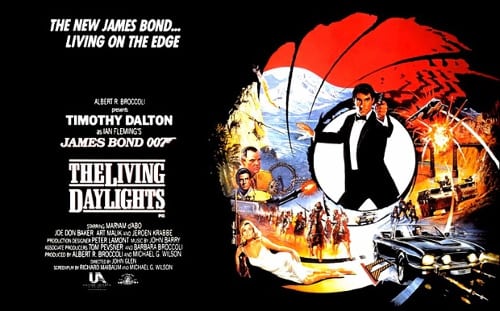
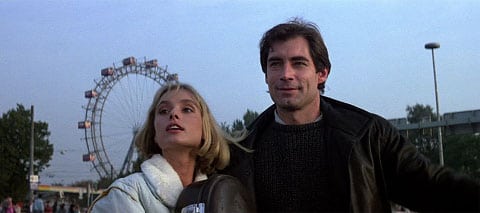
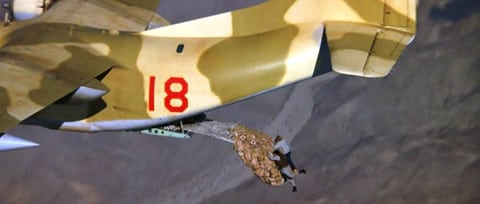



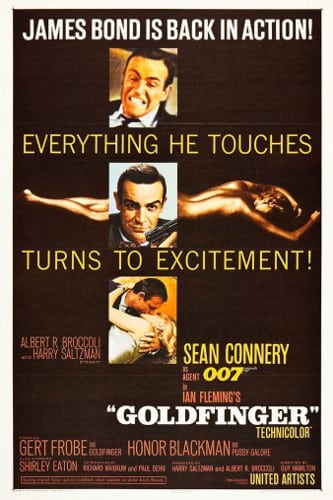

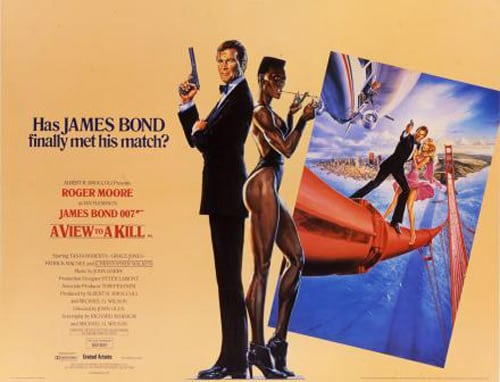
Be the first to comment